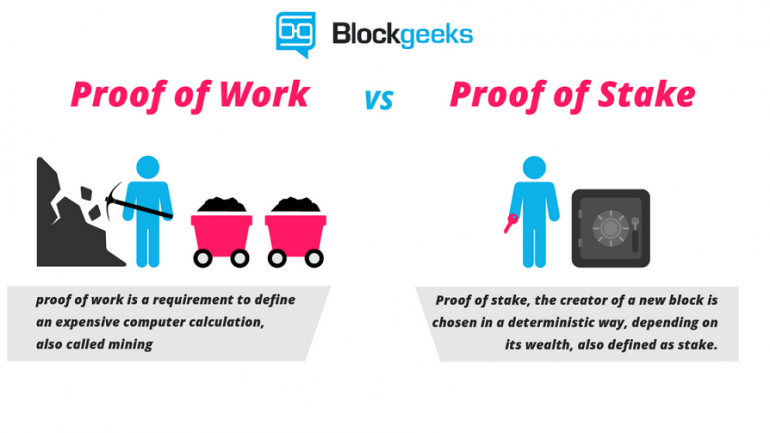Latest news about Bitcoin and all cryptocurrencies. Your daily crypto news habit.
 Bitcoin Mining Farm; Source: Bitcoin.com
Bitcoin Mining Farm; Source: Bitcoin.com
Mining is a staple aspect of major decentralized networks like Bitcoin, Ethereum, Bitcoin Cash, etc.. Over the years, due to the profitability of earning block rewards, mining has become a business operation studded with billion-dollar companies like the infamous Bitmain. Proof of Work networks have evolved due to the rise of mining farms: fewer independent nodes are adding hash power to the network. Today, the vast portion of network hash rates on the largest decentralized blockchains is sourced from massive mining farms. Because of this, some blockchains have reached a point where mining farms have become a necessary evil as the networks now rely on them to maintain the hash rate level needed to keep the network secure.
There’s a cruel irony here.
Due to the incredible amount of money mining farms have invested, Proof of Work systems have essentially turned into Proof of Stake blockchains as most of the network is secured by entities that have bought resources for the sole purpose of acquiring hash rate. This is their stake and the guarantee that they act in the best interest of the network. Additionally, while goliath-like mining farms have become the key securers of blockchain networks, their constantly growing role in blockchains has turned the concept of decentralization into a mirage.
Too Much Control; Too Few Hands
The vast portion of Bitcoin’s hash rate is sourced from a handful of cloud contract-providers and private mining farms. The purpose of a decentralized money is to ensure no one or few entities can collude to gain control of the money. However, the concentration of mining power is threatening the very reason Nakamoto created Bitcoin: decentralizing control over wealth.
At present, a number of farms possess enough network hash rate that their collaboration could enable to acquire full control of the Bitcoin network. Due to this, Vitalik Buterin has proposed to evolve Ethereum from a PoW network to a PoS network. It’s worth noting that a vast portion of Ethereum is held in less than a 100 wallets due to the incredible amount of ETH issued to Ethereum ICO investors. Thus, a Proof of Stake Ethereum would hinge power among a few.
Due to this, the Ethereum Foundation has a difficult challenge so solve: how to maintain decentralization in a PoS network?
 Simplified comparison of PoW and PoS; Source: Blockgeeks
Simplified comparison of PoW and PoS; Source: Blockgeeks
Alternative Blockchains with Alternative Approaches
Despite the nascent stage of the blockchain technology, this sector has managed to attract a tremendous number of talented developers. Many projects are integrating novel consensus mechanisms to create a network that delivers an innovative solution to maintain decentralization.
Many networks have evolved the Proof of Stake consensus to create networks that offer a greater degree of decentralization. STEEM and EOS, for example, democratizes node selection by allowing each node to vote for validators. Elrond Network, which uses a Secure Proof of Stake consensus, integrates a reputation factor into node selection. While smart contract chains are looking to deviate towards some form of Proof of Stake consensus, privacy coins are a particular niche of coins where a wide of variety of approaches is being explored to counter the power of centralized mining businesses.
Decentralizing Privacy Coins
Recently, Monero made headlines when its network update cracked down on farms by improving the network’s ASIC resistance capabilities. Even though Monero’s success against mining farms has been short0-lived, it has made a leap forward in the right direction.
Despite the innovative approaches of many alternative blockchains, the fact remains that the Proof of Work consensus mechanism ensures a blockchain stays truly decentralized. It enables anyone to have the opportunity to secure a network; secure their wealth. Simultaneously, it allows everyone to have a fair chance at acquiring money from block rewards. The key to ensuring mining farms do not abuse the system is by advancing ASIC resistance.
A new privacy chain, VEIL, is carrying the torch in the fight against hash centralization.
VEIL is a new privacy chain that integrates the Zerocoin Protocol which is used by a number of privacy coins, including Zcoin and PIVX.
Zerocoin Protocol’s inability to provide privacy on basecoin transactions limits the privacy capabilities of networks that utilize this protocol.
Veil Labs, the foundation leading the development of VEIL, uses Monero’s RingCT technology to anonymize basecoin transactions, thereby creating the first ever Zerocoin Protocol-enabled network that provides robust privacy on all transactions, irrespective of whether the payment is done in zerocoins or basecoins.
To ensure that the network remains decentralized yet secure, VEIL uses a hybrid Proof of Work/Proof of Stake consensus. The presence of mining ensures that everyone can acquire the coin by becoming a value-additive part of the network. As mining farms have proven to abuse such networks, VEIL advances the X16R hashing algorithm pioneered by Raven Coin and integrates the X16RT algorithm.
ASICs are devices optimized to provide hash rates to a specific algorithm. X16RT, however, utilizes 16 different algorithms. Which algorithm is used in a round is decided randomly; the source of this randomization variable lies in the previously mined block.
This method of randomization makes it extremely difficult for an ASIC to predict which algorithm to target. No particular machine has an advantage over the other when mining X16RT.
Thus, buying expensive ASIC computers would not provide a particular advantage over household computers with typical GPUs. With the integration of the X16RT hashing algorithm, VEIL can be mined by anyone on an even playing field.
Optimal Privacy
An overlooked aspect of a true privacy coin is complete decentralization. For transactions to remain anonymous, it is of paramount importance that no single entity acquires a concentrated role in mining.
While privacy chains have been fixated on anonymizing transactions at the point of validation, it’s important to not forget that the validator must also not have access to transaction sources. Dash’s use of masternodes can potentially enable validators to know transaction sources, and other PoW mining networks hinge on the hope of mining farms acting in the best interest of the network. VEIL, on the other hand, is pioneering a privacy chain where privacy is trustless due to the advanced ASIC-resistant nature of the blockchain.
Disclaimer: The author of this article owns VEIL cryptocurrency.
The Future of Mining and the Importance of ASIC Resistance was originally published in Hacker Noon on Medium, where people are continuing the conversation by highlighting and responding to this story.
Disclaimer
The views and opinions expressed in this article are solely those of the authors and do not reflect the views of Bitcoin Insider. Every investment and trading move involves risk - this is especially true for cryptocurrencies given their volatility. We strongly advise our readers to conduct their own research when making a decision.
